As a global company accustomed to remote working and online collaboration, we are fortunate that the transition to working from home these past few weeks has been a smooth one. What’s more, it has revealed a few hidden benefits in delivering training and reliability projects remotely.
I have highlighted some of what we’ve learned over the past few weeks to show that distance doesn’t need to be a hindrance to your reliability initiatives. In fact, our experience has shown that it can sometimes be more favorable than traditional methods of working.
‘Face-to-face’ via video offers unique advantages
Whether we are meeting internally or meeting with clients, it is not uncommon for there to be one or more individuals or teams joining via video conference. Collaboration in these meetings can be difficult as those in the room naturally feel more connected to one another than those joining in from remote locations—particularly if that person is just phoning in and spends most of their time with the mute button on.
What we’ve realized in the past few weeks is that when everyone joins a meeting by video this barrier is removed. Everyone is on a level playing field and it doesn’t matter whether they are calling in from the same city, another site or half-way across the globe. When it comes to delivering projects, the implication here is that it doesn't matter if you can't all be together onsite and in the same room. You can have conversations that are equally if not more productive via video conference. The best way for this to work is for everyone to join from their own computer. So when we eventually return to the office and you see us joining calls independently from the same location, you will know why.
Remote model can increase flexibility and lower costs
When providing training or consulting in-person, we try to optimize efficiency and reduce travel costs by spending two or more full days onsite. The downside to this is that it can be a challenge to schedule in these large blocks of time with everyone who needs to be involved.
One of the greatest advantages of working remotely is that it has removed constraints related to travel and therefore increased flexibility in scheduling. So instead of scheduling a full day of training or consulting, we can break that down into smaller blocks of time based on what works best for our clients.
While we know there will always be clients who prefer to work with us onsite, we also know that providing our services virtually is not only viable, but may sometimes be preferred.
Going virtual can help consolidate training
While this isn't strictly a learning, the last few weeks have underscored how effective virtual training can be and we have realized some advantages for clients. The first is that virtual training makes it easy to bring together employees from across different sites so you can cut out travel costs or avoid running sessions at each site. The other advantage is that you can mix up training groups. So, if it doesn’t work for your business to have too many people pulled away from operations on any one day, you can run separate training sessions with small groups comprised of a few people from each site.
Reach out and talk to us if you’d like to learn more about how we can work together at this time. You can also read more here about the measures we have in place to work safely while continuing to meet the needs of our clients.


